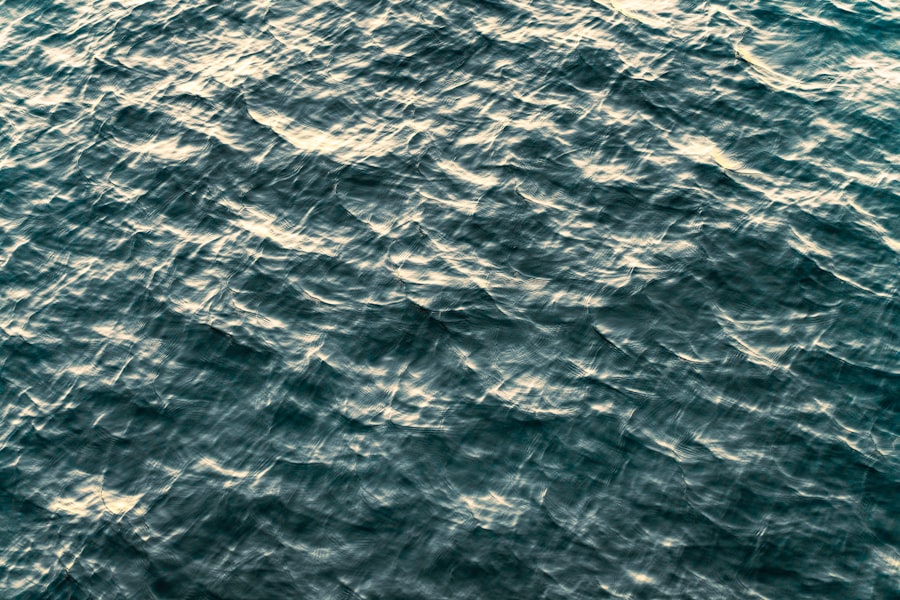The Drake Passage, a body of water located between the southern tip of South America and Antarctica, is renowned for its tumultuous seas and unpredictable weather. Spanning approximately 600 kilometers (370 miles) in width, it serves as a critical maritime route for vessels traveling to and from the Antarctic region. Named after the English explorer Sir Francis Drake, who navigated these waters in the late 16th century, the passage has become synonymous with both adventure and peril.
Its unique geographical position not only connects two major landmasses but also plays a significant role in global oceanic currents and climate patterns. The Drake Passage is often characterized by its rough waters, which can pose significant challenges for even the most seasoned mariners. The confluence of the Atlantic and Pacific Oceans creates a dynamic environment where waves can reach staggering heights, and storms can develop rapidly.
This unpredictability has made the passage a focal point for researchers, adventurers, and those seeking to explore the pristine wilderness of Antarctica. Understanding the intricacies of navigating this formidable stretch of water is essential for ensuring safe passage and appreciating the natural beauty that lies beyond.
Key Takeaways
- The Drake Passage is a challenging and important route for ships traveling between South America and Antarctica.
- Navigating the Drake Passage requires understanding the challenges of strong winds, high waves, and unpredictable weather conditions.
- A depth chart is crucial for navigating the Drake Passage due to its shallow areas and underwater hazards.
- Tides and currents play a significant role in navigating the Drake Passage and must be carefully considered for safe passage.
- Weather patterns, including strong winds and storms, can have a major impact on navigating the Drake Passage and require careful planning and preparation.
Understanding the Challenges of Navigating the Drake Passage
Navigating the Drake Passage is not for the faint of heart. The combination of strong winds, powerful currents, and shifting weather patterns creates a challenging environment that demands respect and preparation. Mariners must contend with the notorious “Drake Shake,” a term used to describe the rough seas that can arise without warning.
These conditions are exacerbated by the passage’s relatively shallow depths in certain areas, which can lead to steep waves and sudden swells that catch vessels off guard. In addition to the physical challenges posed by the water itself, navigators must also be acutely aware of their surroundings. The passage is home to numerous hazards, including icebergs and floating debris, which can pose significant risks to navigation.
The need for constant vigilance is paramount, as even minor miscalculations can lead to dangerous situations. Mariners must be well-versed in their navigation techniques and prepared to adapt to rapidly changing conditions to ensure safe passage through this treacherous waterway.
Importance of a Depth Chart for Navigating the Drake Passage

A depth chart is an invaluable tool for anyone attempting to navigate the Drake Passage. These charts provide detailed information about underwater topography, including depths, submerged hazards, and potential anchorages. By utilizing a depth chart, mariners can make informed decisions about their routes, avoiding shallow areas that could jeopardize their vessels.
The importance of accurate depth information cannot be overstated, as it directly impacts safety and efficiency during transit. Moreover, depth charts can help sailors identify areas of interest along their journey. For instance, certain regions may be more conducive to fishing or wildlife observation, while others may present opportunities for anchoring or shelter from inclement weather.
By understanding the underwater landscape through depth charts, navigators can enhance their overall experience in the Drake Passage, making their journey not only safer but also more enjoyable.
The Role of Tides and Currents in the Drake Passage
| Metrics | Findings |
|---|---|
| Tidal Range | Up to 7 meters in some areas of the Drake Passage |
| Current Speed | Can reach up to 1.5 meters per second |
| Impact on Marine Life | Strong tides and currents support diverse ecosystems in the region |
| Navigation Challenges | Strong tides and currents pose challenges for ships navigating through the passage |
Tides and currents play a crucial role in shaping the navigational landscape of the Drake Passage. The interaction between oceanic tides and local topography creates complex current patterns that can significantly affect vessel movement. Mariners must be aware of these currents, as they can either aid or hinder progress through the passage.
For instance, favorable currents can provide a boost to a vessel’s speed, while adverse currents can slow it down or even push it off course. Understanding tidal patterns is equally important for safe navigation. Tides in the Drake Passage can vary significantly due to factors such as wind direction and atmospheric pressure.
Mariners must take these variations into account when planning their routes and timing their crossings. By aligning their travel plans with favorable tidal conditions, sailors can optimize their journeys and minimize the risks associated with navigating this challenging waterway.
Weather Patterns and Their Impact on Navigating the Drake Passage
The weather in the Drake Passage is notoriously unpredictable, with conditions capable of changing rapidly within a matter of hours. This variability poses significant challenges for navigators who must remain vigilant and adaptable throughout their journey. Storms can develop quickly, bringing high winds and heavy seas that can make navigation treacherous.
Mariners must be prepared to alter their plans at a moment’s notice in response to shifting weather patterns. In addition to storms, fog and low visibility are common occurrences in the Drake Passage. These conditions can complicate navigation further, making it difficult for mariners to spot hazards or maintain their bearings.
As such, it is essential for sailors to stay informed about weather forecasts and utilize advanced meteorological tools to anticipate changes in conditions. By doing so, they can enhance their safety and improve their chances of successfully navigating this challenging maritime route.
Tips for Using a Depth Chart to Navigate the Drake Passage

When using a depth chart to navigate the Drake Passage, mariners should prioritize accuracy and detail. It is essential to select charts that are up-to-date and reflect current conditions in the area.
Sailors should also familiarize themselves with symbols and markings on the chart to interpret data effectively. In addition to understanding how to read depth charts, mariners should integrate this information with other navigational tools such as GPS systems and radar. By cross-referencing data from multiple sources, sailors can create a comprehensive picture of their surroundings and make informed decisions about their routes.
Furthermore, keeping a log of depth readings during transit can help identify patterns or anomalies that may be useful for future voyages through the passage.
Safety Precautions for Navigating the Drake Passage
Safety should always be a top priority when navigating the Drake Passage. Mariners must ensure that their vessels are well-equipped for rough conditions by conducting thorough pre-departure checks on all equipment and supplies. This includes verifying that life-saving gear is readily accessible and functional, as well as ensuring that communication devices are operational in case of emergencies.
Additionally, it is crucial for sailors to have contingency plans in place should they encounter unexpected challenges during their journey. This may involve identifying safe havens along their route where they can seek shelter from storms or mechanical issues. Crew training is also essential; all members should be familiar with emergency procedures and know how to respond effectively in various scenarios.
By prioritizing safety measures, mariners can navigate the Drake Passage with greater confidence.
Navigation Equipment and Tools for the Drake Passage
Navigating the Drake Passage requires a range of specialized equipment and tools designed to enhance safety and efficiency. Modern vessels are typically equipped with advanced navigation systems that include GPS technology, radar, and electronic chart displays. These tools provide real-time data about a vessel’s position and surrounding environment, allowing mariners to make informed decisions while at sea.
In addition to electronic systems, traditional navigational tools such as compasses and sextants remain valuable assets for sailors traversing the Drake Passage. These instruments serve as backups in case of electronic failures or malfunctions. Furthermore, having access to reliable communication devices is essential for maintaining contact with other vessels or shore-based support during transit.
By utilizing a combination of modern technology and traditional methods, mariners can enhance their navigational capabilities in this challenging maritime environment.
Historical Significance of the Drake Passage
The historical significance of the Drake Passage cannot be overstated; it has long been a vital route for explorers, traders, and researchers alike. Sir Francis Drake’s expedition in 1578 marked one of the first recorded crossings of this treacherous waterway, paving the way for future exploration of Antarctica and beyond. Over the centuries, countless adventurers have braved its waters in search of new lands, resources, or scientific knowledge.
In more recent times, the passage has become an important area for scientific research related to climate change and marine ecosystems. Researchers study its unique oceanographic conditions to better understand global climate patterns and their implications for biodiversity in polar regions. The historical context surrounding the Drake Passage adds depth to its allure; it serves as a reminder of humanity’s enduring quest for discovery amid nature’s formidable challenges.
Wildlife and Natural Wonders of the Drake Passage
Despite its reputation for rough seas, the Drake Passage is home to an astonishing array of wildlife and natural wonders that captivate those who venture through its waters. The region serves as a migratory route for numerous species of seabirds, including albatrosses and petrels, which glide gracefully above the waves in search of food. Additionally, marine mammals such as whales and seals are frequently spotted in these waters, providing opportunities for wildlife enthusiasts to witness these magnificent creatures up close.
The natural beauty of the Drake Passage extends beyond its wildlife; its dramatic landscapes are characterized by towering icebergs and stunning glacial formations that create a breathtaking backdrop for any voyage.
This unique combination of wildlife and natural wonders makes navigating the Drake Passage not only an adventure but also an opportunity for profound connection with nature.
Navigating the Drake Passage with Confidence
Navigating the Drake Passage presents both challenges and rewards that require careful preparation and respect for nature’s power. By understanding its complexities—ranging from tidal patterns to weather conditions—mariners can enhance their chances of safe passage while fully appreciating the beauty that lies within this remarkable waterway. Utilizing tools such as depth charts alongside modern navigation equipment empowers sailors to make informed decisions throughout their journey.
Ultimately, confidence in navigating the Drake Passage stems from knowledge, experience, and an unwavering commitment to safety. As adventurers continue to explore this iconic maritime route, they carry with them not only a sense of wonder but also an appreciation for its historical significance and ecological richness. With proper preparation and respect for its challenges, navigating the Drake Passage becomes an unforgettable journey into one of nature’s most awe-inspiring realms.
The Drake Passage, a crucial waterway connecting the Atlantic and Pacific Oceans, is renowned for its challenging navigation conditions and significant depth variations. For those interested in exploring more about the geographical intricacies and the depth chart of the Drake Passage, a related article can be found on MyGeoQuest. This resource provides detailed insights into various geographical features and their implications for navigation and marine life. To delve deeper into this topic, you can visit the article on MyGeoQuest’s sample page, which offers a comprehensive overview of the Drake Passage and its unique characteristics.
WATCH NOW! Drake Passage: Earth’s Deadliest Waters Revealed
FAQs
What is the Drake Passage?
The Drake Passage is the body of water between the southern tip of South America and the northern tip of the Antarctic Peninsula. It connects the Atlantic and Pacific Oceans.
What is a depth chart?
A depth chart is a graphical representation of the underwater topography of a specific area, showing the depths of the water at various points.
Why is a depth chart important for the Drake Passage?
A depth chart is important for the Drake Passage because it helps ships and vessels navigate through the area safely by providing information about the underwater terrain and potential hazards.
How is a depth chart created for the Drake Passage?
Depth charts for the Drake Passage are created using various methods, including sonar technology, satellite imagery, and data collected from previous expeditions and surveys.
What is the average depth of the Drake Passage?
The average depth of the Drake Passage is approximately 11,000 feet (3,400 meters), making it one of the deepest passages in the world.
Are there any particularly deep areas in the Drake Passage?
Yes, there are several deep areas in the Drake Passage, with some parts reaching depths of over 15,000 feet (4,600 meters). These deep areas can pose challenges for navigation and require careful attention from ship captains and crews.
